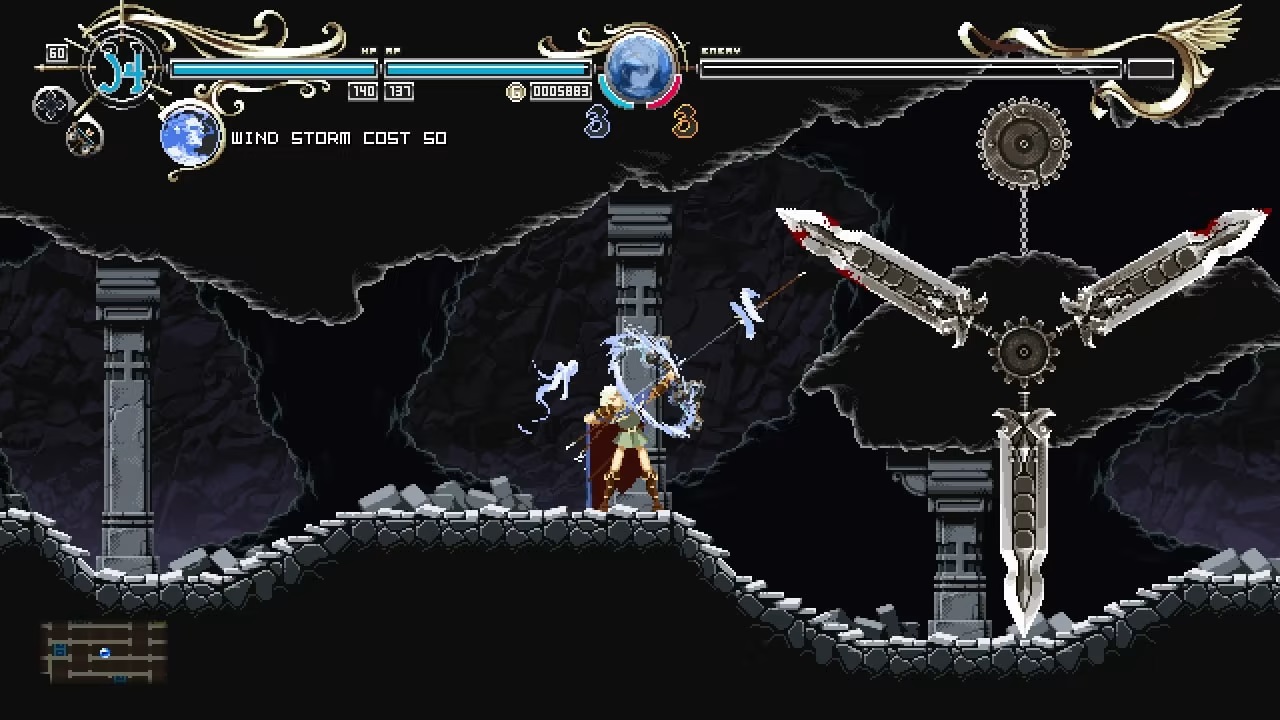[Review] Record of Lodoss War: Deedlit in Wonder Labyrinth
System: Switch
Release date: January 28, 2022
Developer: Team Ladybug
Publisher: Playism
Record of Lodoss War is one of the oldest still-running Japanese series a lot of people have probably never heard about. With media that includes not only video games but novels, manga, and anime, the franchise’s history dates back over three decades to 1986. While Deedlit in Wonder Labyrinth is the newest installment in the series, it’s also nostalgic in a lot of ways, from its beautiful 2D pixel art style to its story.
Although the narrative in Deedlit in Wonder Labyrinth is decidedly sparse, it’s clear even to someone who doesn’t have a long history with the series that the game is rife with callbacks. In fact, that’s essentially what the story amounts to, as the wonder in Wonder Labyrinth is why so many of Deedlit’s past friends and foes are appearing before her in this strange place. For that reason, the impact of the story will certainly be much higher for someone who’s familiar with these characters and their backstories, but I was surprised by how much of an impression it left on me even though I knew next to nothing about the Record of Lodoss War going in.
Part of Deedlit in Wonder Labyrinth’s lack of focus on a winding narrative comes down to the fact that it’s a Metroidvania through and through. The visual style and combat feels reminiscent of the Igarashi Castlevania games, and the game delivers quality on both fronts. While it takes inspiration from Castlevania in its level design as well, it doesn’t quite reach the mark there. Despite having the kind of interconnected world you would expect, the exploration is fairly linear in terms of progression, with backtracking mostly being relegated to short dead-ends that lead to optional power ups. The game does feature some puzzle solving elements as well, but they’re on the lighter side and not enough to make it feel distinct amongst its peers in the genre.
What really sets Deedlit in Wonder Labyrinth apart from other Metroidvanias is its spirit system. Deedlit quickly finds two spirits, Sylph the wind spirit and Salamander the fire spirit, and both play a central role in the combat, exploration, and boss battles. Similar to the polarity system in Ikaruga, Deedlit will drain all wind attacks when Sylph is equipped, replenishing her MP gauge, which is used for firing arrows and magic attacks, in the process. Naturally, the same is true for Salamander and attacks with fire attributes. Each spirit can be leveled up three times by defeating enemies and dealing damage to bosses, with the benefit of increased attack power at each level and passive healing to Deedlit at level three. The catch is that the level goes down each time Deedlit is hit, making evasion through her backdash and other means imperative during combat.
With the spirit system, dodging isn’t the only option however: sometimes it’s better to switch to the right element and absorb an enemy’s attacks. Certain enemies will utilize far reaching projectile attacks that fill the screen, and it’s much easier (and more beneficial) to equip the attack’s corresponding spirit to avoid damage and fill up Deedlit’s MP gauge. The challenge comes from enemies often being impervious to damage from the same element, making it necessary to switch to the opposite spirit at some point to deal damage. The spirits heavily factor into exploration as well, as Sylph allows Deedlit to glide over terrain while Salamander is called on to destroy obstacles blocking her path.
While the spirit system plays an important role during normal enemy encounters and exploration, it’s most prominently featured in the game’s boss battles. Simply put: most of the boss battles are unbeatable without making good use of the spirits. Evading boss attacks is often impractical, and absorbing them is the best course of action, but the fact that their attacks interchange between both elements will also force you to constantly switch between both spirits on the fly and remain cognizant of which one is equipped at any given time. In addition, using long range attacks such as arrows and magic when Deedlit’s sword won’t reach the boss will put a heavy burden on the MP gauge, and absorbing their attacks is the best way to replenish it.
Aside from the fact that it can sometimes be difficult to check or remember which spirit is equipped in the heat of the moment, boss battles are challenging but fair and one of Deedlit in Wonder Labyrinth’s highlights. They’re also quite the visual spectacle between gigantic dragon sprites, fluid attack animations, and a myriad of attacks filling the screen. Unfortunately, the great graphical showcase in these parts can also be accompanied by significant slowdown. The severity can range from a small split second dip to a few seconds where the performance absolutely tanks, and in the latter case, it’s possible to eat some hits you feel you shouldn’t have. It’s less frequent, but slowdown can also occur in some overworld areas where there’s similarly a lot going on in the environment. These performance issues don’t make the game unplayable but can lead to some bouts of frustration.
Beyond the performance hiccups, the visuals in Deedlit in Wonder Labyrinth are impressive. The sprite work and animations are beautiful, particularly Deedlit’s attack animations with her sword and other melee weapons, and some of the larger bosses are tremendous. With the game taking place in the titular labyrinth, there isn’t a ton of room for environmental variety, but the castle type aesthetic is executed nicely and there are sporadically some verdant areas that really stand out. The visual presentation is yet another highlight and a great example of pixel art brought to the modern era.
Between its visuals, combat, and spirit system, Deedlit in Wonder Labyrinth is a fun overall package but also a fairly short one. There’s no playtime on save files, but I can’t imagine it took me much more than five hours for 94% map completion. A boss rush mode is unlocked after the credits roll, and there are gambling and target mini games, however, they’re nice bonuses rather than something that will extend the play time significantly for most players. Deedlit in Wonder Labyrinth is a quality game but also one that you could realistically finish in one night.
The Verdict
At its heart, Deedlit in Wonder Labyrinth knows exactly what it is, right down to Deedlit’s very familiar running animation, and it executes on its inspirations very well for the most part. The pixel art style is gorgeous, the animations are impressive, and the controls and combat feel good. The game is challenging throughout but not brutal in its difficulty, and boss battles are frequent and fun (even with the occasional slow down). The spirit system makes the experience feel fresh even for genre veterans, offering an interesting twist on something familiar. Deedlit in Wonder Labyrinth is short but sweet, and if you’re a fan of the series or looking for a quality Metroidvania to get through in a weekend, it’s easy to recommend.
Record of Lodoss War: Deedlit in Wonder Labyrinth copy provided by the publisher for the purposes of this review.



